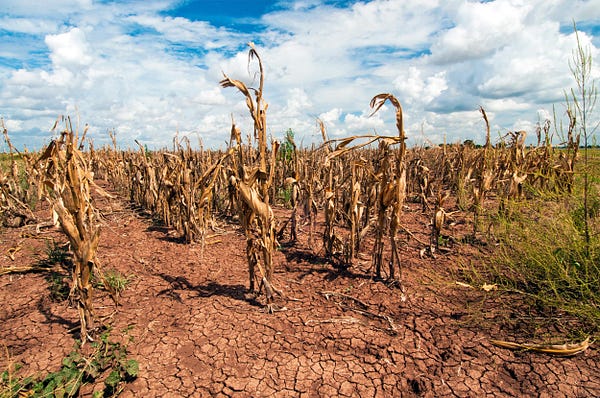
Across the country, farmers, ranchers and forest landowners have experienced a slow but steady uptick in their operational risks, due in part to a variety of impacts from a changing climate.
Growing seasons in the Midwest, a region that includes my home state of Iowa, have lengthened by almost two weeks since 1950. In the Southeast, rising temperatures are increasing risk of heat-stress for livestock and crops. Fire season, which most dramatically impacts the Western states, is now 78 days longer than it was just 30 years ago and that number will grow with more insect outbreaks, more drought and more storms over the next 50 years. All of these events not only threaten our food supply and, therefore, our national security, but are also costly for producers and rural economies.
To give agriculture and forest producers a reliable source of regional data and science-based information, USDA established seven regional Climate Hubs and three sub-hubs. The Hubs aim to process science and research into information that is accessible to producers, and provide guidance and practices to help land managers address a region-specific set of risks due to climate variability and change.
Established in 2014, each of the USDA Climate Hubs offer detailed vulnerability assessments to highlight regional sensitivities and adaptation strategies for working lands. The Hubs have prepared regional GHG emissions profiles, identified mitigation opportunities and produced numerous decision support tools and outreach materials to help land managers make climate-informed decisions.

Our nation’s public and private forests offset up to 14 percent of GHG emissions each year. Knowing our forests are one of the earth’s best filters of GHG, the Forest Service developed a landmark Forest Planning Rule in 2012 — the first such rule in a generation — to guide management of the 193 million acres in the National Forest System. Forests across the country are revising their individual plans to meet requirements to protect water and wildlife, and combat climate change, fire and pests. Each plan requires land managers to identify and evaluate climate stressors and monitor impacts. This balanced approach to climate change includes managing forests and grasslands to adapt to changing conditions, mitigating climate change, building partnerships across boundaries, and preparing our employees to understand and apply emerging science.
In 2015, USDA launched the answer to President Obama’s Climate Action Plan challenge for food and forestry, with the Building Blocks for Climate Smart Agriculture and Forestry. Ten building blocks span a range of technologies and practices to reduce greenhouse gas emissions, increase carbon storage and generate clean renewable energy.
Through the Department’s voluntary and incentive-based conservation and energy programs, USDA and its partners are moving forward to reduce net emissions and enhance carbon sequestration by over 120 million metric tons of CO2 equivalent per year, or about 2 percent of economy-wide net greenhouse emissions, by 2025. This reduction is the equivalent of taking 25 million cars off the road or offsetting the emissions produced by powering nearly 11 million homes per year.
Our strategy is designed to meet the needs of producers by enhancing productivity and economic benefits while boosting efficiency to ensure that participating farmers are improving yields while they adapt.
The Building Blocks also encourage USDA to partner with industry, farm groups, conservation organizations, municipalities, public and private investment products, tribes and states. A wide-ranging and diverse group of companies including the Nature Conservancy, Walmart, United Suppliers, The Fertilizer Institute, The Forest Climate Working Group and theEnvironmental Defense Fund, to name a few, came together to announce early actions and commitments to more sustainable practices, signaling their support of our approach and showing that, all-told, our cumulative commitments can add up to meaningful results.
These Building Blocks are significant not only within the United States, but also internationally. Just this past Earth Day, nearly 200 countries, including the United States, signed a new framework to reduce global greenhouse gas emissions and enhance carbon sinks. The Paris Agreement, adopted under the United Nations Framework Convention on Climate Change, builds on the United States’ commitment to reduce GHG emissions by 26 to 28 percent below 2005 levels by 2025. The Building Blocks demonstrate that agriculture and forestry are playing a significant role in helping the United States meet its commitment. In turn, the United States is developing practices and strategies that will serve as a model for other nations to address emissions from the land sector while also meeting the world’s needs for food, fiber and energy. A progress report on our commitments under the Building Blocks will be released this month highlighting our accomplishments and plans for the future.
read more original article
